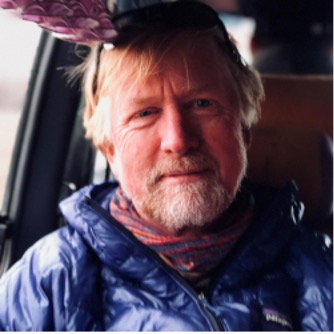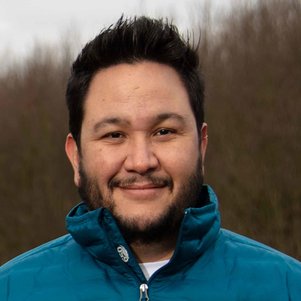10 About the Authors

Dr. Scott W. Tyler is a Foundation Professor in the Department of Geological Sciences and Engineering at the University of Nevada, Reno and co-director (with co-author John Selker) of the National Science Foundation-supported Centers for Transformative Environmental Monitoring Programs (CTEMPs) Community User Facility focusing on the development and application of fiber-optic based sensing for environmental temperature and strain. His research spans the atmospheric boundary layer, through the vadose zone and has included deep groundwater circulation.
With training in mechanical engineering and hydrogeology, his research is focused on water, solutes, and energy fluxes in the subsurface, as well as their exchange into the. Along with colleague and friend, John Selker from Oregon State University, he leads the NSF-supported CTEMPs, making DTS systems and training available to the hydrologic and earth science community. His recent work focuses on the measurement of the dynamics and thermal evolution of Antarctic ice shelves and the ocean waters below. As part of the NSF-supported TARSAN project, he helped developed fiber-optic moorings on the Thwaites Glacier and developed a distributed acoustic monitoring system for both the ice shelf and the underlying ocean which has been operating at Thwaites since 2020.

Dr. John S. Selker is a Distinguished Professor of Biological and Ecological Engineering, Oregon State University, focused on Water Resources Engineering. His areas of expertise include vadose zone and groundwater systems, electronic design, and development projects. In addition to his CTEMPs role, he is co-director of the Trans-African Hydro-Meteorological Observatory (TAHMO) with co-Author Nick van de Giesen, which aims to develop a continental-scale network of weather stations across Africa. He has worked in the USA, Kenya, Somalia, Sri Lanka, Canada, Chile, and England and carried out research in Chile, Ghana, Senegal, Israel, China, and 10 European countries. Dr. Selker has published 230 peer-reviewed articles. In 2013, he was elected Fellow of the American Geophysical Union and received the John Hem Award for Science and Technology from the American Groundwater Association, then in 2020 he was elected President of the American Geophysical Union Hydrology Section, a position previously held by Scott Tyler.

Nick van de Giesen received the Kandidaats Bachelor of Science degree and the Master of Science degree in Land and Water Management from Wageningen Agricultural University (currently, named: Wageningen University & Research), Wageningen, The Netherlands, in 1984 and 1987, respectively, and a Ph.D. from Cornell University in 1994. After a postdoctoral position with the West Africa Rice Development Association, Bouaké, Côte d’Ivoire, he was a Senior Researcher for six years with the Center for Development Research (ZEF), University of Bonn, Bonn, Germany, where he was the Scientific Coordinator of the Global Change in the Hydrological Cycle Volta Project. Since 2004, he has been with the Water Resources Section, Faculty of Civil Engineering and Geosciences, Delft University of Technology, where he currently holds the “Van Kuffeler” Chair of Water Resources Engineering. Since January 2015, he has been chairman of the Delft Global Initiative. With Dr. Selker, he is co-director of the Trans-African Hydro-Meteorological Observatory (TAHMO) and a member of several international scientific advisory boards. He is the scientific head of the Sustainable Development Goals route of the Netherlands National Science Agenda. His research interests concern new environmental observation methods, such as Distributed Temperature Sensing, and computational hydrology (www.ewatercycle.org).

Dr. Thom Bogaard is an Associate Professor at the Delft University of Technology, Department of Water Management and at IHE Institute for Water Education, Delft. His research focuses on hydrology and geomorphology. He likes to work on multidisciplinary problems including hydrology, water quality, geomorphology and ecology. He is specialized in soil, hillslope and landslide hydrology as well as in the development and application of innovative measurement techniques for hydrology, such as applying fiber optic cable in hydrogeomorphological studies and developing nanoparticles with DNA-tags that can be used as water flow path tracers. Thom Bogaard works on several capacity-building projects with local universities and knowledge institutes in Southeast Asia, Africa and South America. He serves as executive editor of the open-access Hydrology Earth System Sciences journal and associate editor of Wires Water.

Dr. Juan Pablo Aguilar-López is an Assistant Professor in the Hydraulic Engineering Department of the Delft University of Technology. He is interested in the use and implementation of technology (open hardware, innovative sensors and machine learning) in structure design and operation for flood risk management. He has an M.Sc. in hydroinformatics and a Ph.D. in probabilistic design of multifunctional flood defenses. Since the start of his career, Dr. Aguilar-López has been interested in the use of real-time monitoring of flood management structures and the post-processing of these measurements via surrogate modeling for structural operation. He aims to improve and develop methods to monitor and quantify flood risk and resilience and to incorporate resilience in designs for flood risk reduction in cities and urban regions, including both grey and green (nature-based) interventions. The combination of real-time monitoring and data-driven modeling allows a fast and accurate diagnosis of a flood defense system for operation. This is of paramount importance for flood risk managers and stakeholders as it makes flood defense systems more flexible and resilient, and can be used for risk reduction, early warning, evacuation decisions and even asset management.
